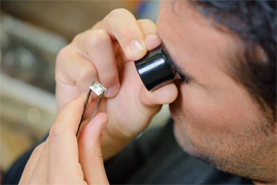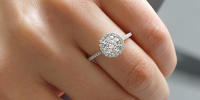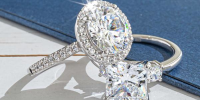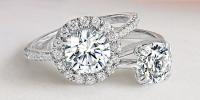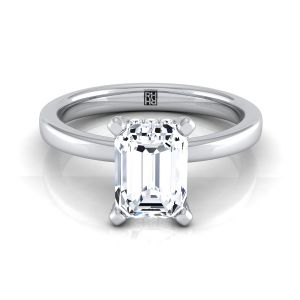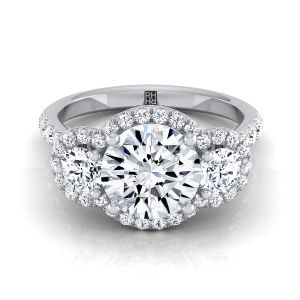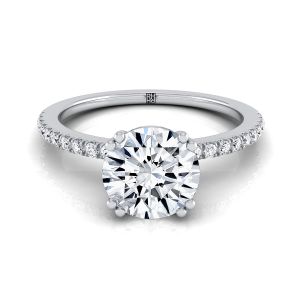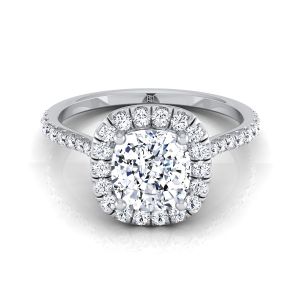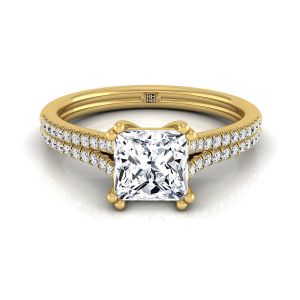
It is common for
jewelry buyers to underestimate the role the metal alloy of their ring plays in the value of a piece. Shoppers are drawn more to the stone itself as well as the way it is set. However, ignoring the metal can have disastrous consequences. Following is a look at how the overall price is affected by the metal you choose.
Yellow Gold
The stock metal option for pairing with
diamonds,
yellow gold is one of the oldest metals there is. It gives off attractive color and brightness, and works best with
diamonds carrying a hint of yellow in them.
White Gold
White gold contains metals like silver or palladium, besides the pure gold of course. The former give it a color that, upon plating with Rhodium, appears
white.
White gold costs less than
yellow gold, but is more secure and scratch-resistant.
 Platinum
Platinum
Platinum
Platinum is rarer than
gold, and more expensive as a result. It is only ever used in pure form, and has hypoallergenic properties that preclude skin allergies, as well as heavy resistance to breaking chipping and cracking. If you can afford it, a
diamond with
platinum ring is the best way to ensure your
ring will last longer.
 It is common for jewelry buyers to underestimate the role the metal alloy of their ring plays in the value of a piece. Shoppers are drawn more to the stone itself as well as the way it is set. However, ignoring the metal can have disastrous consequences. Following is a look at how the overall price is affected by the metal you choose.
Yellow Gold
The stock metal option for pairing with diamonds, yellow gold is one of the oldest metals there is. It gives off attractive color and brightness, and works best with diamonds carrying a hint of yellow in them.
White Gold
White gold contains metals like silver or palladium, besides the pure gold of course. The former give it a color that, upon plating with Rhodium, appears white. White gold costs less than yellow gold, but is more secure and scratch-resistant.
It is common for jewelry buyers to underestimate the role the metal alloy of their ring plays in the value of a piece. Shoppers are drawn more to the stone itself as well as the way it is set. However, ignoring the metal can have disastrous consequences. Following is a look at how the overall price is affected by the metal you choose.
Yellow Gold
The stock metal option for pairing with diamonds, yellow gold is one of the oldest metals there is. It gives off attractive color and brightness, and works best with diamonds carrying a hint of yellow in them.
White Gold
White gold contains metals like silver or palladium, besides the pure gold of course. The former give it a color that, upon plating with Rhodium, appears white. White gold costs less than yellow gold, but is more secure and scratch-resistant.
 Platinum
Platinum is rarer than gold, and more expensive as a result. It is only ever used in pure form, and has hypoallergenic properties that preclude skin allergies, as well as heavy resistance to breaking chipping and cracking. If you can afford it, a diamond with platinum ring is the best way to ensure your ring will last longer.
Platinum
Platinum is rarer than gold, and more expensive as a result. It is only ever used in pure form, and has hypoallergenic properties that preclude skin allergies, as well as heavy resistance to breaking chipping and cracking. If you can afford it, a diamond with platinum ring is the best way to ensure your ring will last longer.









